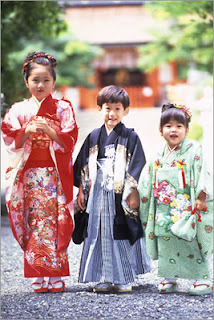Today I went to the shrine with my family and
began to think about how the rituals within my religion reflect my approach to
life. The attitude that I
gain from my beliefs underpins many of the structures within my family
and my society. It is also apparent in my social life, and personal
devotions. My family are devoted adherents, which means that we perform daily rituals, both morning and evening, in front of our ‘kami
dana’. I sometimes find this to be tiresome and excessive, but through
these practises I know that I am properly seeking to join my ancestors within
the kami world. Our family 'kami dana' can be seen below.
 |
| My Families 'Kami Dama' |
In Shinto, many people are constantly in acts of private devotion, through the simple act
of bowing or prayer, the lighting of votive candles, which represent a wish or
desire, or offering food. As my family work within agriculture, we usually
offer vegetables and grains. Last year my grandmother passed away, and her funeral
was incredibly important. We have ceremonies to mark the various stages of our lives. Some of these include a baby’s
first visit to the family shrine, and the ‘Seven-Five-Three’ festival, where
girls aged three or seven and boys aged five attend shrines to pray for good
health. I remember when I took part within this festival, it was incredibly
exciting for both my family and I.
 |
| The 'Seven Five Three' Festival |
Originally, our Shinto practises were simplistic, and ceremonies did not require
special buildings. Every family
that adheres to Shinto, such as mine, has its own kami. The special
seasonal festivals within the Shinto faith are February, June, October and
December. During these, a portable shrine is carried throughout to ensure that
the blessing of kami is present on the entire community. My family and I visit
our shrine weekly, and there are a number of rituals that follow. When entering the shrine, it is essential that we wash at the water trough to purify ourselves and then we hang wooden plaques inscribed
with prayers on the wall. We then proceed to the inner shrine, where there are many sacred symbols of kami, and we summon these by ringing a bell and making sacrifices
of rice or money.
 |
| Our Family Shrine |
A boy in my village recently has to undergo harai, were he came in contact with something
that we would call pollution, that being an unclean person or thing, blood, sickness
or possibly even death. In harai, the person undergoes ritual purification involving
fasting, reciting scriptures, self-mortification or another rite.
Another
important aspect within my faith is that there is a spiritual and physical aspect
to a human’s nature. Our spirit outlasts
our physical death and dwells within the kami world, or not according to our observance of faith. I ensure that I correctly observe the required rituals
of Shinto so that I may please kami and live on in their world after death. It
is said, “If in one’s heart one is kami, then one becomes a kami.” (Kurozumi
Munetada) It is imperative that I remain loyal to my family, ancestors, emperor,
country and Shinto beliefs.









